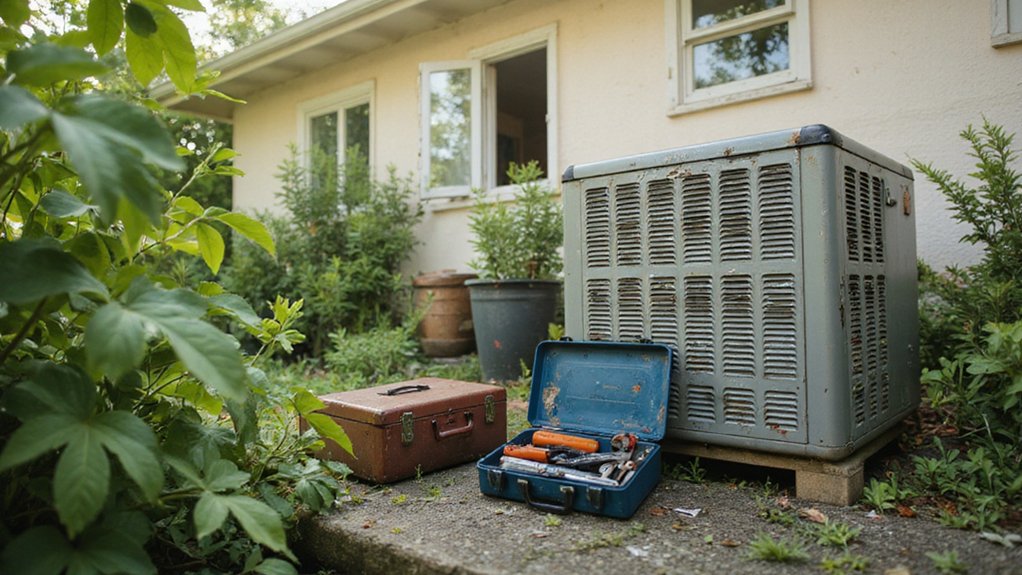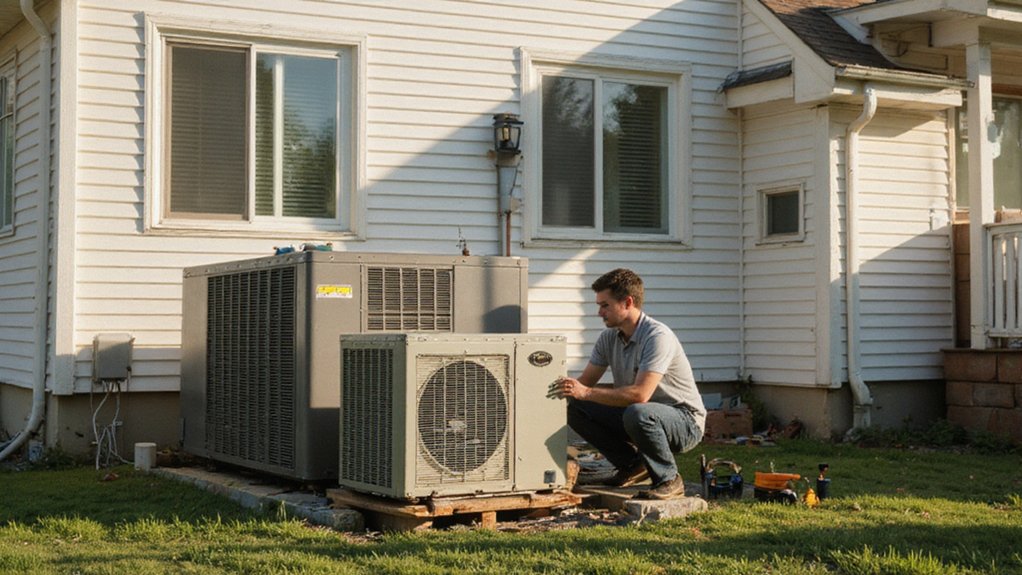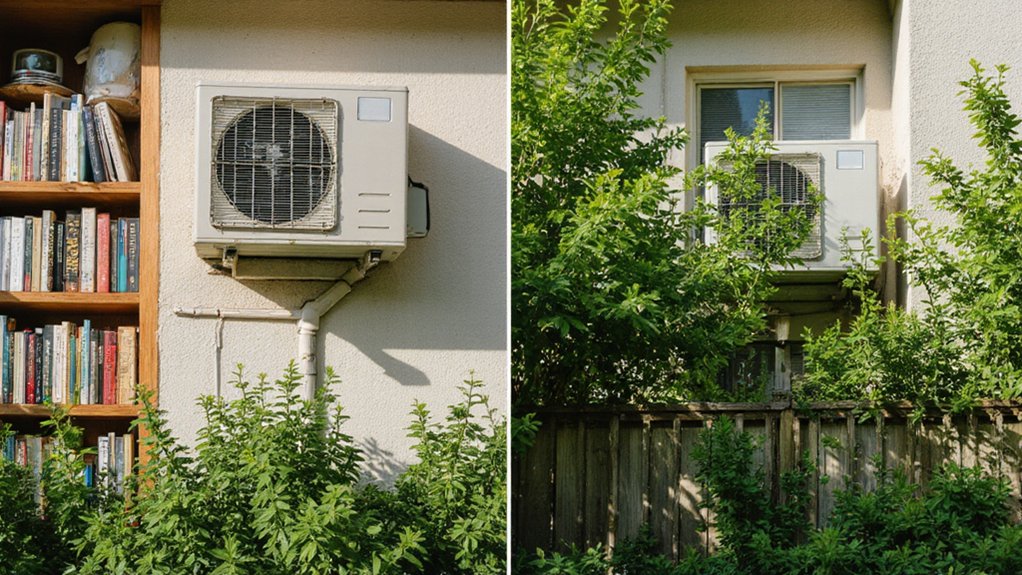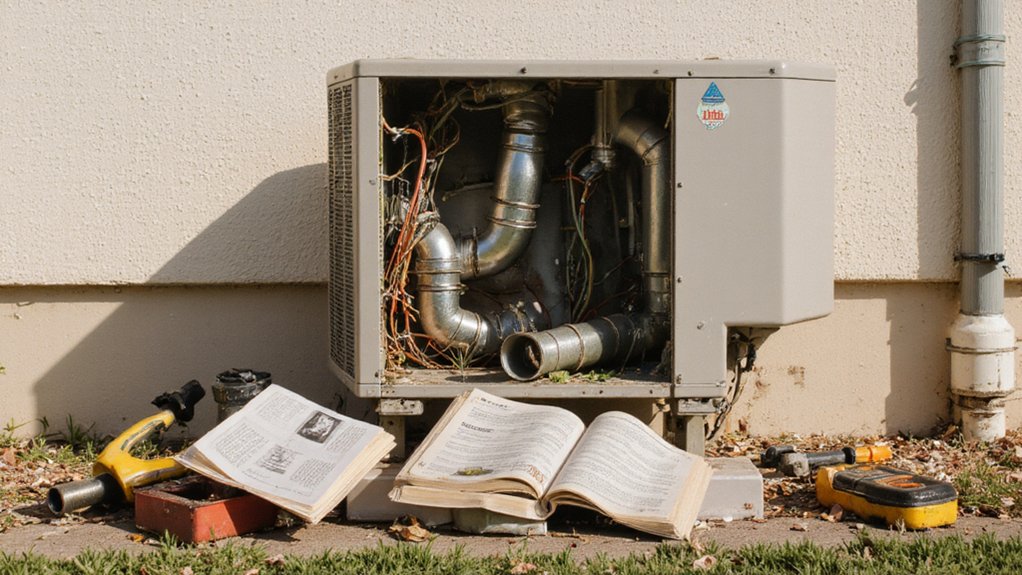related posts
AC Installation Mistakes Homeowners Should Avoid

A brand-new AC should make your home feel comfortable, not cause constant problems. Still, plenty of people end up frustrated because of simple installation mistakes that could’ve been avoided. A wrong size unit, bad placement, sloppy ductwork, or skipping maintenance can make even the best AC run poorly. If you’re getting a new system, here’s what you’ll want to watch out for so everything runs the way it should.
Key Takeaways
- Pick the right size unit or you’ll waste energy and get poor cooling.
- Indoor and outdoor units need to be placed correctly so air can move freely.
- Cheap or leaky ductwork can ruin performance.
- Electrical connections must match the system and be secured properly.
- Skipping maintenance leads to breakdowns and high repair bills.
Choosing the Wrong Size Unit

Sizing isn’t guesswork. A unit that’s too small runs nonstop and still never cools the house. A big one cools fast but shuts off too quickly, leaving the air sticky and uncomfortable.
To size things correctly, somebody has to do a load calculation. That uses the square footage of your home, insulation, sun exposure, and climate to figure out the cooling power you actually need. It’s boring math, but it saves you from miserable summers and huge power bills later.
Poor Placement of the Indoor and Outdoor Units

Placement might seem minor, but it makes a huge difference.
The indoor unit should be in a central spot so air can move evenly through the house. If it’s tucked in a corner or behind furniture, the air just doesn’t circulate.
The outdoor unit needs space and airflow too. Put it somewhere shaded if possible, but not jammed into a tight area. Leaves, debris, or walls too close to the unit make the system overheat and struggle.
A perfectly sized AC installed in the wrong place can still perform badly.
Neglecting Ductwork Quality and Sealing

A lot of homeowners obsess over choosing the AC unit itself and forget the ductwork. That’s like buying a great shower head but connecting it to a clogged pipe.
Cheap ducts or poorly sealed joints leak cold air into the attic instead of the rooms where you need it. That means higher bills, weak airflow, and uneven temperatures.
Quality ducts plus solid sealing (mastic or metal tape, not regular tape) make a huge difference. It’s not the fun part of the installation, but it affects comfort more than most people realize.
Improper Electrical Connections

If the wiring doesn’t match the system, things can get dangerous fast. AC units need the right voltage and amperage to run safely.
Before installation, someone should check that the home’s electrical setup matches the unit. If it doesn’t, you could end up with tripped breakers, damaged parts, or worse.
Every wire also needs to be secured firmly. Loose wiring can overheat, arc, or start a fire. If you’re not fully confident with electrical work, this is not the DIY step to experiment with.
Skipping Essential System Maintenance

This is where a lot of people start losing efficiency without realizing it.
ACs need routine check-ups. Ignoring them doesn’t break the system immediately, but it slowly wears things down until a big repair finally hits.
The easiest thing you can do yourself is change the filter. Once it’s dirty, airflow drops and the AC has to strain to cool the house. Most homes need a new filter every one to three months.
Duct cleaning is another big one. Dust and debris build up over time and choke the system. You’ll feel it in both comfort and your energy bill.
Not Considering Energy Efficiency Ratings

Energy efficiency isn’t just a fancy number. A higher SEER rating means the AC uses less power to get the same job done. Even though efficient units often cost more upfront, they save money every month and usually last longer.
If you’re trying to decide between two units and the only difference seems to be price, check the SEER ratings. The cheaper one might cost you more in the long run.
Overlooking Insulation and Air Leakage

Even the best AC can’t cool a leaky, poorly insulated house. If cold air escapes through the attic, around windows, or through gaps in the ductwork, the unit will run nonstop trying to keep up.
Insulation and sealing might not feel connected to AC installation, but they absolutely are. Fixing leaks keeps your home comfortable and takes a huge burden off your cooling system.
Failing to Account for Local Climate

Climate really matters. A dry region and a humid coastal area don’t need the same kind of cooling. Homes in humid places need AC units that can remove moisture properly, not just blow cold air.
If the system isn’t designed for your area, expect high bills, sticky rooms, and constant cycling.
Ignoring Manufacturer Installation Guidelines

AC manufacturers include specific instructions for a reason. Ignoring them can lead to poor airflow, electrical problems, refrigerant issues, and even voiding the warranty.
A lot of future problems are avoided by simply following the manual.
Frequently Asked Questions
How can I tell what size AC my home needs?
A load calculation is the proper method. It looks at square footage, insulation, sunlight, and climate to estimate the cooling power required.
What are signs that the ductwork isn’t good enough?
Uneven room temperatures, weak airflow, high energy bills, and dust blowing from vents often point to duct issues.
How often should an AC be serviced?
Most systems do best with maintenance twice a year. A check before summer and before winter keeps things running smoothly.
What SEER rating should I pick?
Fourteen is the current minimum standard, but higher ratings save more energy and money over time.
What can I do to improve insulation?
Seal cracks around windows and doors, add or replace insulation where needed, and insulate the ducts if they run through unconditioned spaces.
Final Thoughts
A good AC system is only as good as its installation. The right size unit, smart placement, solid ductwork, safe electrical connections, and routine maintenance all work together. When those pieces are handled correctly, your home stays comfortable and your bills stay manageable for years.

other blog posts
Climatec Mechanicals Ultimate Christmas Checklist: 18 Tasks to get your home Ready For The Holidays
Common AC Problems in Courtenay, BC Homes and How to Prevent Them
Spring HVAC Maintenance Tips: DIY Care for a Cool & Comfortable Home with Climatec Mechanical
Ready to Enhance Your Comfort?
Contact us today to schedule your service, learn about energy-saving rebates, or join our Maintenance Membership program.



